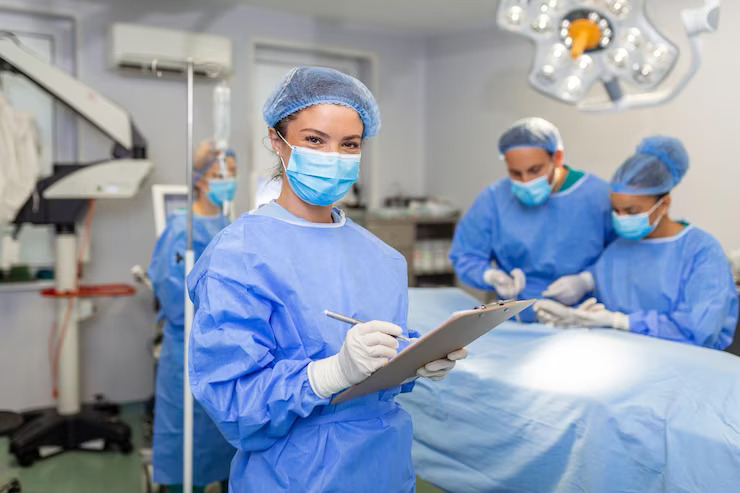Laparoscopic cholecystectomy is a minimally invasive surgery to treat gallbladder diseases like gallstones, inflammation, and infections. In recent years, it has become the gold standard for removing the gallbladder because it is less painful, takes less time in the hospital, and helps people recover faster than traditional open surgery. This post talks about why laparoscopic gallbladder surgery is done, its history, and how its performed.
Understanding the Indications
Cholelithiasis, the name for gallstones that cause symptoms, is usually a reason for laparoscopic gallbladder surgery. Gallstones are hardened bits of digestive fluid that can form in the gallbladder. They can cause severe stomach pain, nausea, vomiting, and fever, among other things. Gallstones can sometimes cause problems, such as inflammation of the gallbladder (cholecystitis), gallstones in the bile duct (choledocholithiasis), or inflammation of the pancreas (pancreatitis). Patients with gallbladder polyps or chronic acalculous cholecystitis, which is inflammation of the gallbladder without stones, may also have a laparoscopic cholecystectomy done.
Background of laparoscopic cholecystectomy
In 1987, a French doctor named Dr. Philippe Mouret did the first laparoscopic cholecystectomy. Since then, the technique has evolved. Surgical tools, techniques, and overall safety have come a long way. The development of high-definition cameras, better trocar designs, and energy devices has helped laparoscopic gallbladder surgery become the most popular way to treat gallbladder diseases.
Procedure
General anaesthesia is used during laparoscopic cholecystectomy to ensure the patient is completely unconscious and doesn’t feel any pain. The doctor makes a few small cuts in the abdomen, to insert special tools, and a laparoscope, a thin tube with a light and camera at the end. The laparoscope lets the surgeon see the surgery site on a monitor, which shows a magnified and well-lit image of the abdomen.
First, the surgeon fills the abdomen with carbon dioxide gas to make room to work and make it easier to see. The gallbladder is then carefully separated from the organs around it. The cystic duct and artery are identified, cut, and separated. One of the small cuts is used to separate the gallbladder from the liver bed and take it out. The surgeon then checks the surgical site for any signs of bleeding or bile leakage before deflating the abdomen and closing the cuts with sutures or staples.
Care after surgery and getting better
After surgery, most people go to a recovery room where they are observed as the effects of the anaesthesia wear off. Most people can go home in 2 to 3 days, depending on how well they are doing and how their health is in general.
Pain at the incision sites and shoulder pain from the gas used to inflate the abdomen are common complaints after surgery, but pain medication can help. Patients are told to walk and gradually get back to their normal activities within a few days. For several weeks, they should avoid heavy lifting and strenuous exercise.
Possible problems and risks
Laparoscopic cholecystectomy is a safe and effective procedure, but it does carry some risks, just like any other surgery. Possible problems include bleeding, infection, damage to the bile duct or organs nearby, bile leakage, and problems with anaesthesia. Most of the time, the risk of problems is low, and serious problems are rare. Patients should talk to their surgeons about their risks before having the procedure.
Open Surgery
In some cases, the surgeon may run into problems during laparoscopic surgery, forcing him or her to switch to open surgery. It can happen due to severe inflammation, a lot of scar tissue, or any unexpected development. Even though the overall rate of switching to open surgery is low, patients should know that it is possible and talk to their surgeons about it.
In a nutshell, Laparoscopic gallbladder surgery has changed the way gallbladder diseases are treated by giving patients a less painful option with shorter hospital stays and faster recovery times than traditional open surgery. Patients need to know why they need laparoscopic gallbladder surgery, what it is used for, and how it is done, as well as the possible risks and complications. Institutions like Max Healthcare are committed to giving their patients the best possible surgical care. They do this by using cutting-edge technology and experienced surgeons to make sure their patients have the best possible outcomes.
Read more health blogs about:



